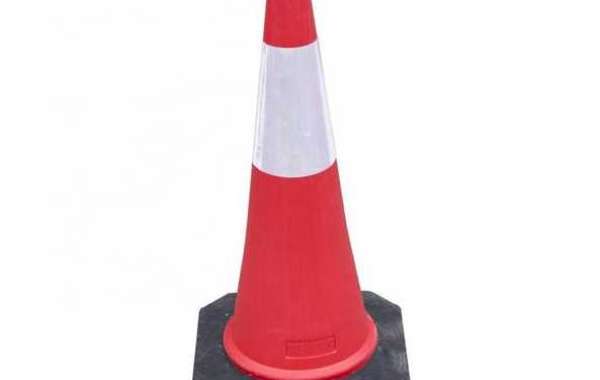While their appearance may seem simple, traffic cones are versatile devices with a wide range of applications beyond just marking roadwork.
1. The Basics of Traffic Cones:
Traffic cones, also known as road cones or safety cones, are conical-shaped markers typically made of bright orange or fluorescent-colored materials. They are easily recognizable due to their distinctive shape and color, making them effective tools for directing traffic and alerting drivers and pedestrians to potential hazards.
2. Ensuring Safety on the Road:
The primary purpose of traffic cones is to enhance safety in various traffic-related situations. Here are some of their key functions:
Lane Dividers: Traffic cones are frequently used to separate lanes or close off lanes temporarily during construction or maintenance work. They help redirect traffic and prevent accidents in work zones.
Pedestrian Safety: Cones are often used to create temporary pedestrian walkways or to indicate areas where pedestrians should not enter.
Parking Control: Traffic cones can reserve parking spaces, restrict parking in certain areas, or indicate no-parking zones.
Warning of Hazards: Cones are used to alert drivers to potential hazards, such as road closures, obstacles, or accidents.
Channelizing Traffic: They guide traffic through detours or temporary routes, keeping vehicles in an organized flow.
3. Design Features of Traffic Cones:
Traffic cones are designed with specific features to make them effective tools for traffic management and safety:
Color: The bright orange or fluorescent color of traffic cones ensures high visibility during the day. Some cones also have reflective bands or sleeves to enhance visibility at night.
Reflective Collars: Many cones have reflective collars or strips that catch headlights, making them visible in low-light conditions.
Weighted Base: Traffic cones typically have weighted bases to keep them stable in windy or high-traffic areas. Some cones may even have rubber bases for added stability and skid resistance.
Stackable: Cones are often designed to be stackable, making them easy to transport and store when not in use.
4. Types of Traffic Cones:
There are several types of traffic cones designed for specific applications:
Standard Traffic Cones: These are the most common type, with a height ranging from 12 to 36 inches. They are used in a wide range of traffic control scenarios.
Collapsible Traffic Cones: These cones are designed for easy storage and transport. They can be expanded and collapsed as needed.
Tall Traffic Cones: Taller cones, often 36 inches or more in height, are used in situations where increased visibility is required, such as on highways.
Weighted Traffic Cones: Cones with added weight are used in windy conditions or where there's a risk of them being knocked over.
Multipurpose Cones: Some cones are designed with additional features, such as slots for attaching caution tape or holes for mounting signs.
5. Innovations in Traffic Cones:
In recent years, there have been innovations in traffic cone design to enhance their effectiveness and durability. These include:
Solar-Powered LED Cones: Some cones are equipped with solar-powered LED lights that can flash or illuminate, making them even more visible at night.
Recycled Materials: Environmentally friendly cones are made from recycled materials, reducing their environmental impact.
Retractable Belts: Some traffic cones have retractable belts, similar to those found in stanchions, to create temporary barriers or guide crowds.
Customization: Traffic cones can now be customized with company logos, messages, or unique colors for specific applications.
6. Maintenance and Care:
To ensure the continued effectiveness of traffic cones, regular maintenance is necessary:
Cleaning: Clean cones periodically to remove dirt and debris, which can reduce visibility.
Inspect Reflective Material: Check reflective collars or strips for damage and replace them if needed.
Check Bases: Ensure the bases are weighted and stable. Repair or replace any damaged bases.
Store Properly: When not in use, store traffic cones in a cool, dry place away from direct sunlight to prevent fading or warping.
In conclusion, traffic cones are versatile tools that play a crucial role in maintaining order and safety on our roads and work zones. With their bright colors, reflective features, and various design options, they help guide traffic, warn of hazards, and create temporary traffic patterns. Innovations in traffic cone manufacturers' design continue to improve their effectiveness and adaptability to different situations. Whether you encounter them on the highway or at a construction site, these unassuming traffic cones are essential in ensuring safety and order on our streets.










